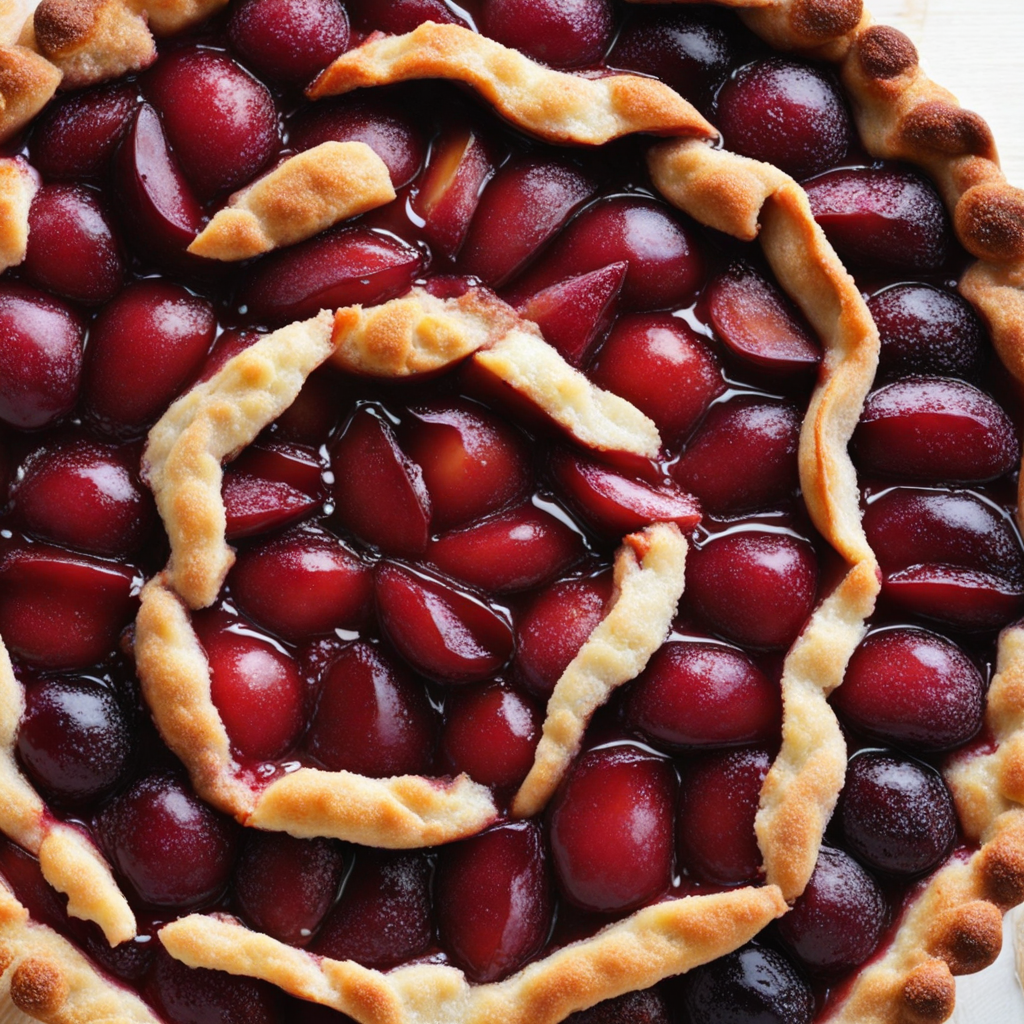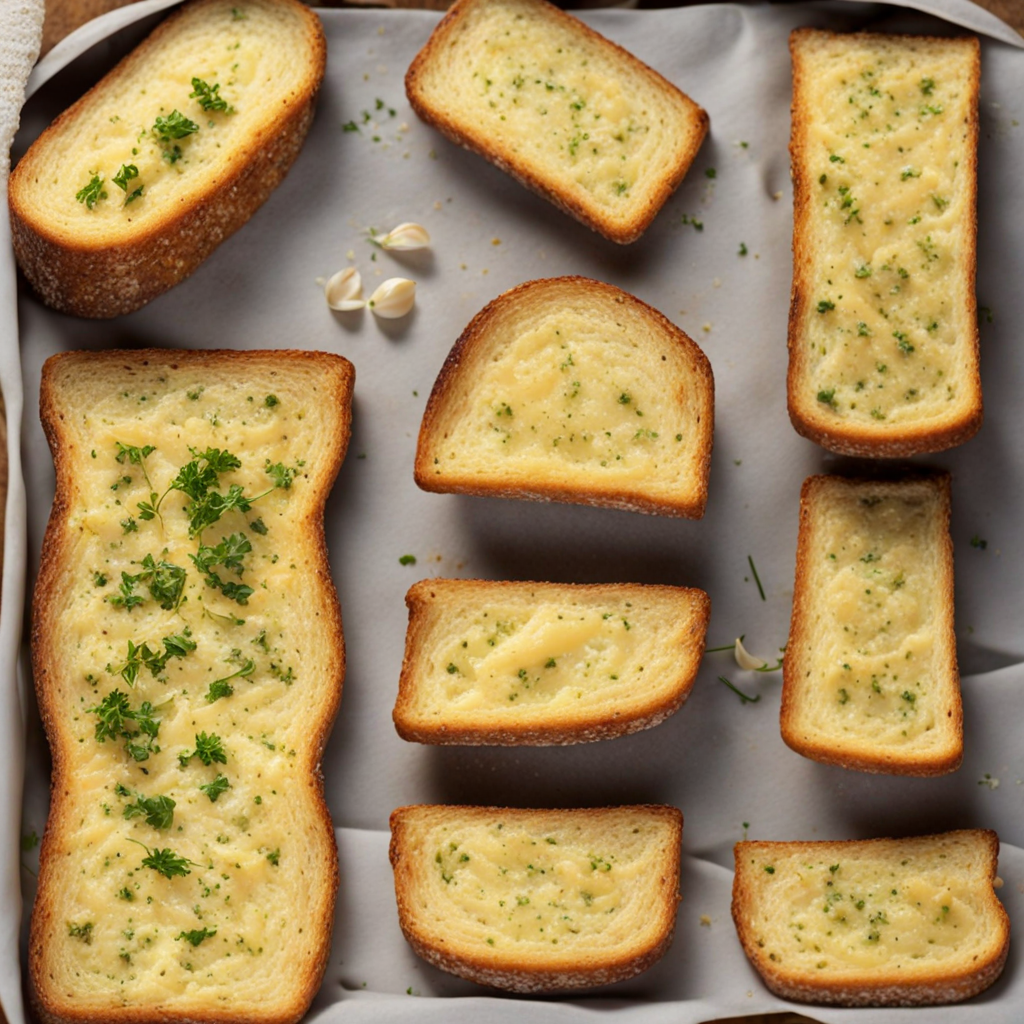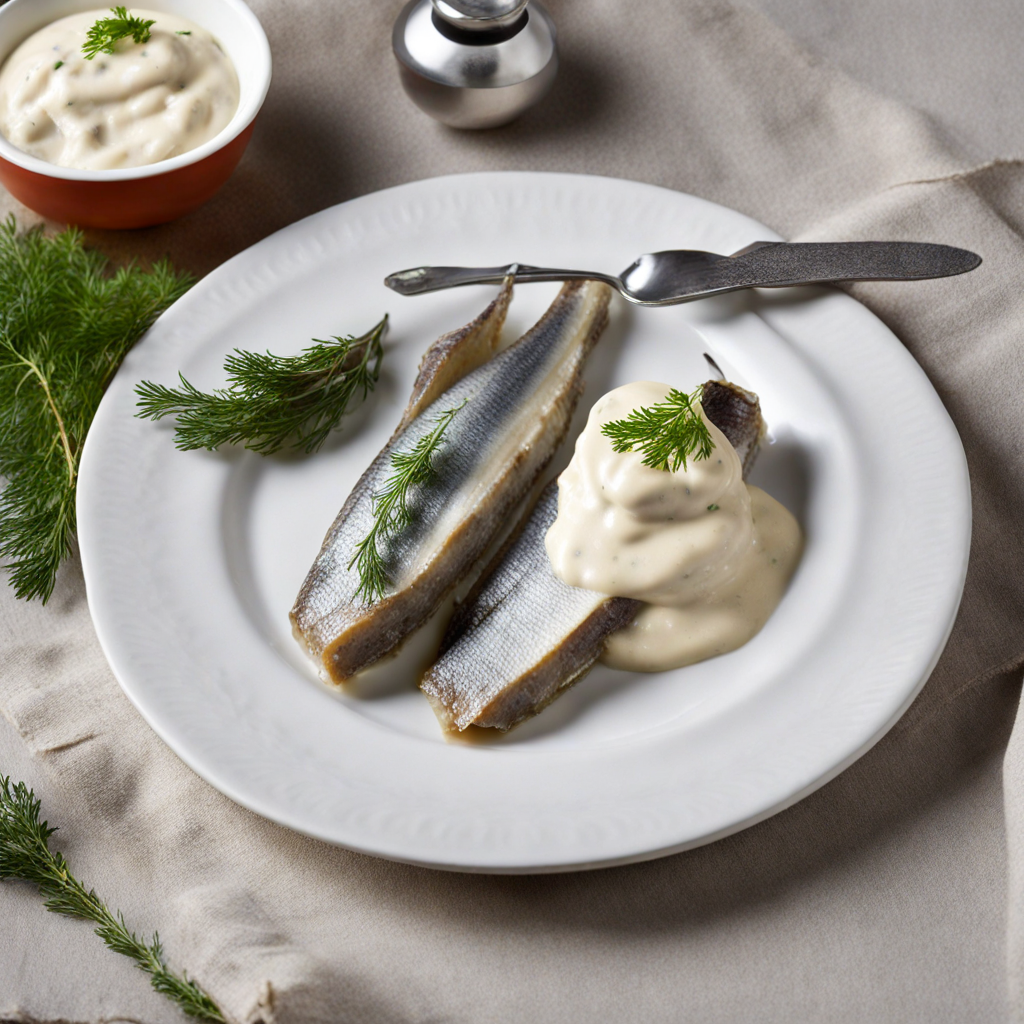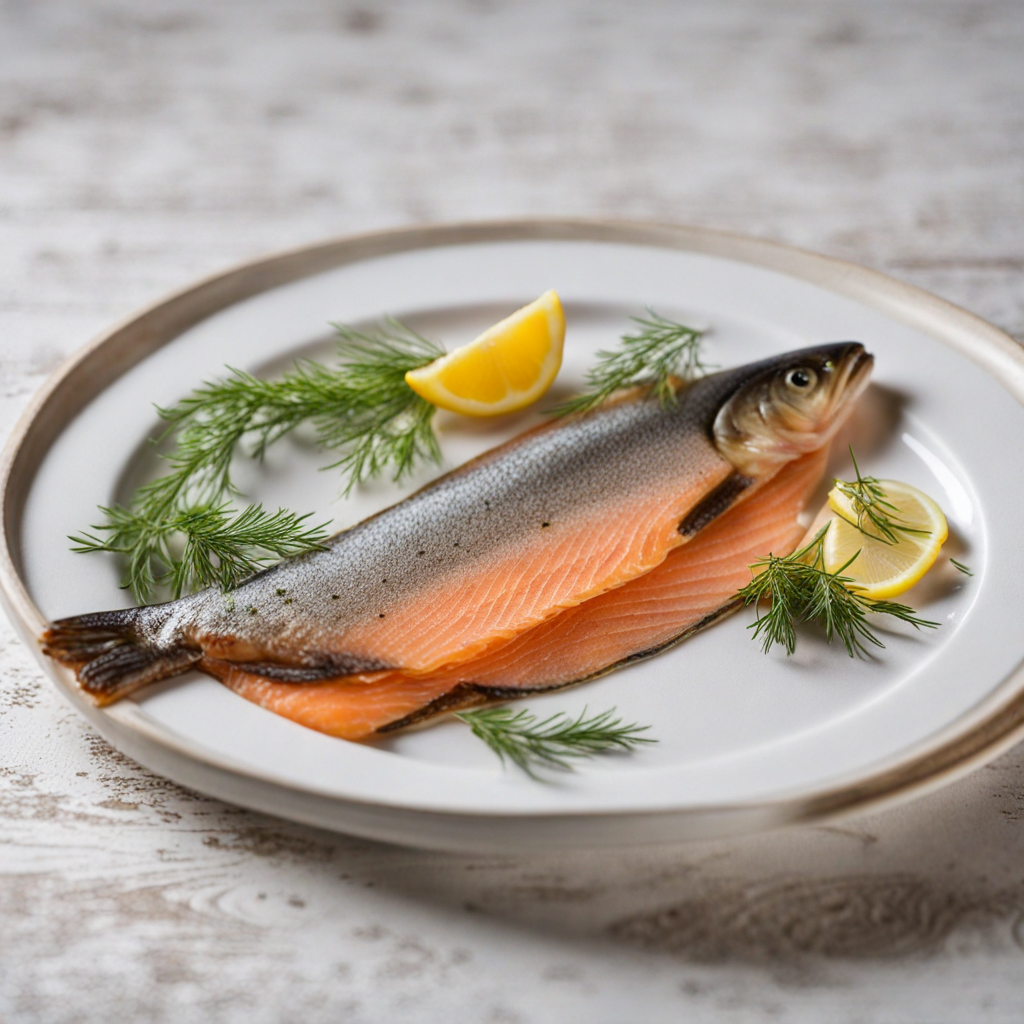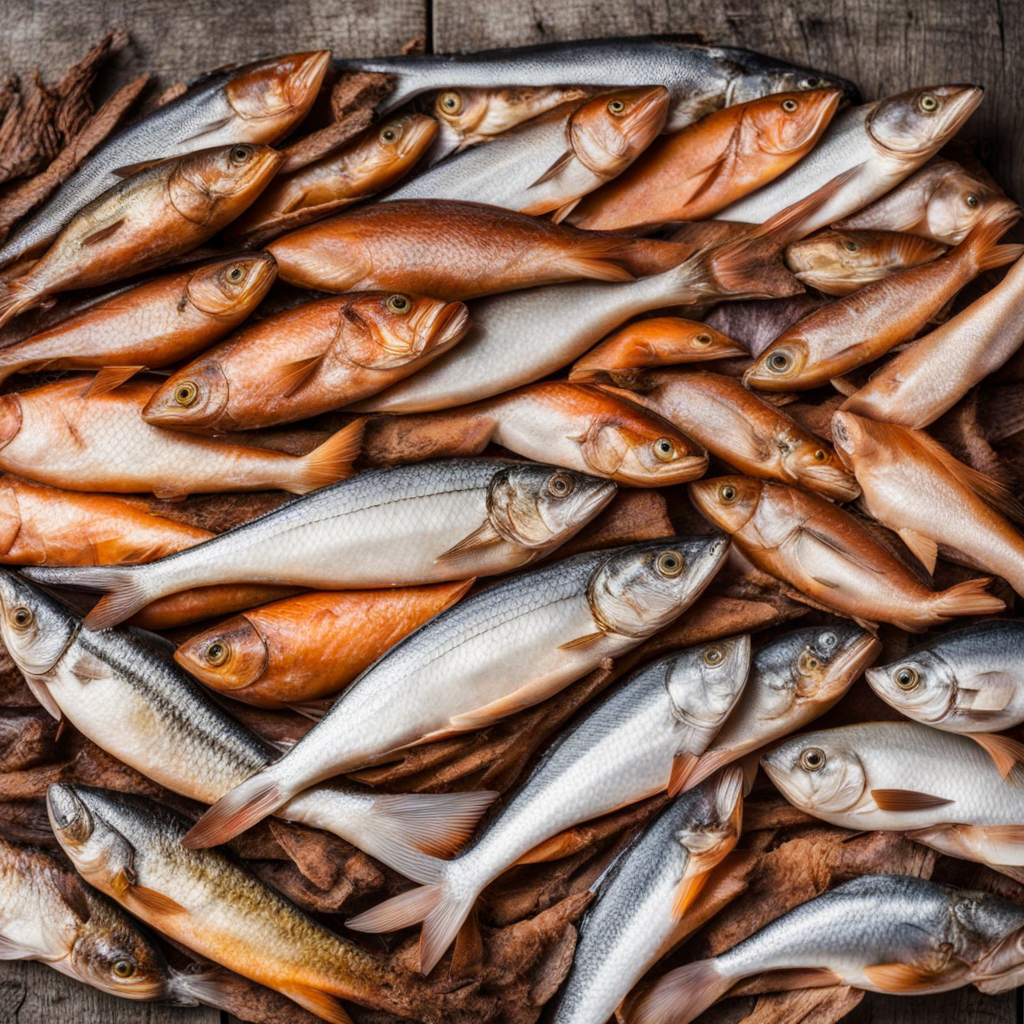Plum Pie
Plum Pie, a cherished dessert in Estonia, showcases the country's love for seasonal fruits and traditional baking techniques. This delightful treat is made with a buttery, flaky crust that cradles a luscious filling of ripe, sweet plums. The plums, often harvested at their peak ripeness, are typically pitted and sliced, allowing their natural juices to meld with a sprinkle of sugar and a hint of cinnamon. This combination creates a warm, inviting flavor profile that perfectly balances sweetness with a subtle tartness, making each bite a delightful experience. As you savor a slice of Plum Pie, the texture is just as captivating as the flavor. The crust is golden and crisp, providing a satisfying contrast to the tender, juicy plums nestled inside. The filling, while rich and comforting, is light enough to leave you wanting more. It is common to serve this pie warm, often accompanied by a scoop of vanilla ice cream or a dollop of whipped cream, enhancing the overall experience with creamy notes that complement the fruity goodness. In Estonia, Plum Pie is more than just a dessert; it's a symbol of home and tradition. Families often gather to enjoy this pie during the late summer and early autumn months when plums are in abundance. The aroma of baking plum pie wafts through homes, inviting loved ones to share in the moment. Whether enjoyed at a festive gathering or as a cozy treat on a quiet evening, Plum Pie embodies the spirit of Estonian comfort food, celebrating the simple pleasures of life with every delicious slice.
How It Became This Dish
The History of Ploomipirukas: Estonia’s Beloved Plum Pie #### Origins Ploomipirukas, or plum pie, is a quintessential dessert from Estonia, a small Baltic nation with a rich history and a vibrant culinary tradition. The roots of this delightful pastry can be traced back to the agricultural practices of the region, where plums have been cultivated for centuries. Estonia’s temperate climate and fertile soil make it an ideal location for growing various fruits, especially plums, which thrive in the warm summer months. The origin of ploomipirukas can be linked to the broader European tradition of fruit pies, which dates back to ancient civilizations. The practice of encasing fruit in pastry emerged as a way to preserve seasonal fruits and to make use of available ingredients. As Estonia was influenced by various cultures through trade and conquest, the recipes evolved, absorbing elements from German, Swedish, and Russian culinary traditions. #### Cultural Significance Ploomipirukas is more than just a dessert; it is a celebration of Estonian culture and a symbol of the country’s agricultural heritage. In Estonia, plum trees are often associated with family gardens and rural life, and the act of making plum pie is frequently tied to communal gatherings and family celebrations. It is common to see ploomipirukas served at festive occasions, such as Midsummer celebrations and harvest festivals, where families come together to enjoy the fruits of their labor. The pie also embodies the Estonian ethos of utilizing local, seasonal ingredients. As a nation that values its connection to nature and the land, the preparation of ploomipirukas reflects a deep appreciation for the bounty of the harvest. Estonians take pride in their culinary traditions, and ploomipirukas stands as a testament to their ability to transform simple ingredients into something extraordinary. #### Development Over Time The evolution of ploomipirukas mirrors the broader changes in Estonian society and cuisine. Initially, the pie was likely a rustic affair, consisting of a simple pastry crust and fresh plums. The crust, made from flour, water, and fat, was rolled out and filled with halved or whole plums, sweetened with sugar and sometimes spiced with cinnamon or cardamom for added flavor. This basic recipe has seen many variations over the years. As Estonia experienced waves of foreign influence, particularly during the periods of German and Swedish rule, the culinary landscape began to shift. The introduction of new baking techniques and ingredients led to the refinement of ploomipirukas. For instance, the addition of sour cream or quark to the filling created a creamier texture that complemented the sweetness of the plums. This adaptation also allowed for the incorporation of different types of plums, such as the sour varieties that thrive in the Estonian climate. In the 20th century, particularly during the Soviet era, the recipe for ploomipirukas underwent further transformation. With the availability of processed ingredients and a focus on efficiency, many home cooks began to utilize pre-made pastry crusts and canned plums. While this made the pie more accessible, it also led to a decline in the traditional methods of preparation. However, the essence of ploomipirukas remained, and many families preserved their cherished recipes, ensuring that the pie was still a staple at gatherings. The independence of Estonia in 1991 marked a renaissance for traditional Estonian cuisine, including ploomipirukas. As the nation sought to reclaim its cultural identity, there was a renewed interest in traditional recipes and local ingredients. The resurgence of farmers’ markets and the farm-to-table movement encouraged chefs and home cooks alike to return to the roots of Estonian cooking. This period saw a revival of artisanal baking, with many bakers experimenting with new flavor combinations and techniques, while still honoring the classic ploomipirukas. Modern interpretations of ploomipirukas often include creative twists, such as adding nuts, chocolate, or even herbs to the filling. Contemporary chefs might serve the pie with a dollop of whipped cream or a scoop of ice cream, elevating the traditional dessert to new heights. Despite these innovations, the core elements of the pie remain intact: the harmony between the sweet, tart plums and the flaky crust continues to delight both locals and visitors alike. #### Contemporary Popularity Today, ploomipirukas enjoys a place of honor in Estonian cuisine and is often featured on menus in restaurants across the country. It has also garnered international attention, with food enthusiasts and travelers seeking out authentic Estonian dishes. The pie is frequently highlighted in festivals celebrating Estonian culture, where it is served alongside other traditional foods, reinforcing its status as a beloved national dish. Moreover, the rising interest in traditional and regional cuisines globally has led to a greater appreciation for dishes like ploomipirukas. As Estonia continues to promote its culinary heritage, ploomipirukas serves as a delicious ambassador of Estonian culture, inviting people to explore the flavors and stories behind this delightful dessert. #### Conclusion Ploomipirukas is more than just a delicious plum pie; it is a symbol of Estonia’s agricultural bounty, cultural heritage, and culinary evolution. From its humble beginnings as a rustic treat to its status as a cherished national dessert, ploomipirukas embodies the spirit of Estonian cuisine. As it adapts to modern tastes while honoring traditional methods, the pie continues to connect Estonians with their roots and share their culinary story with the world. Whether enjoyed during a family gathering or featured in a contemporary restaurant, ploomipirukas remains a beloved staple that celebrates the flavors and traditions of Estonia.
You may like
Discover local flavors from Estonia


